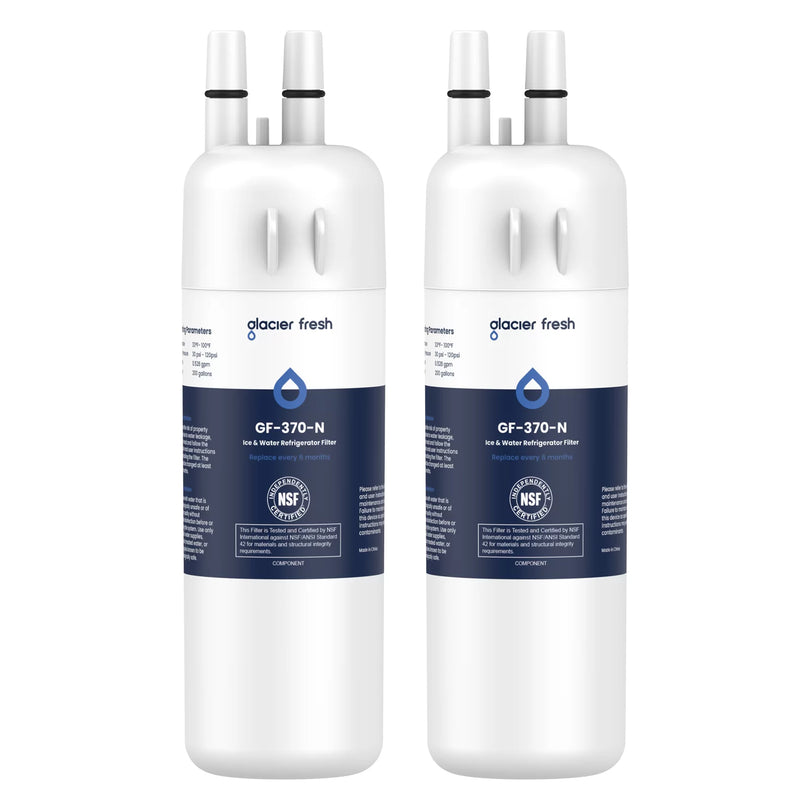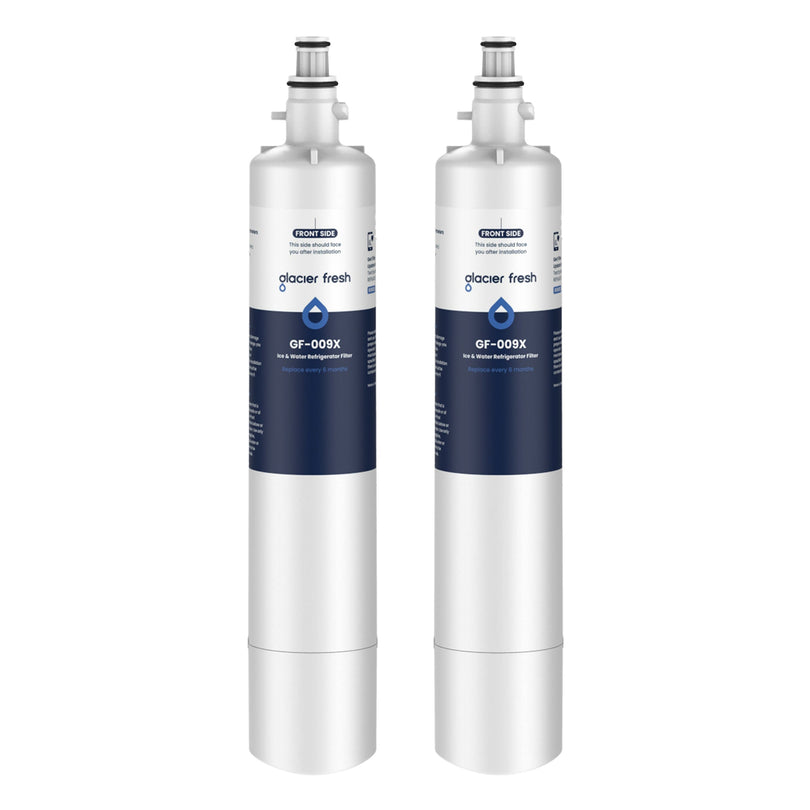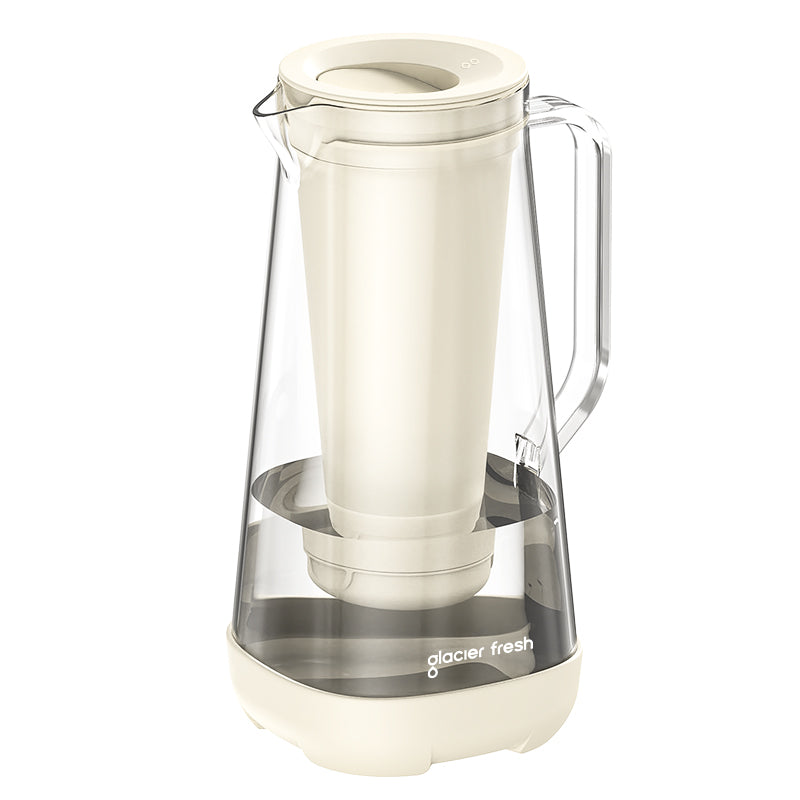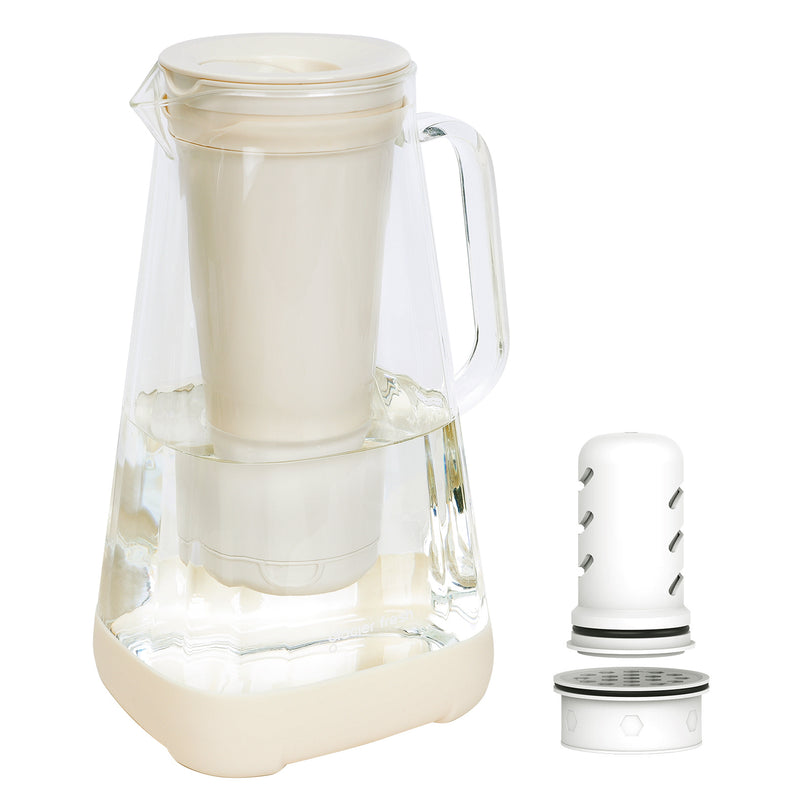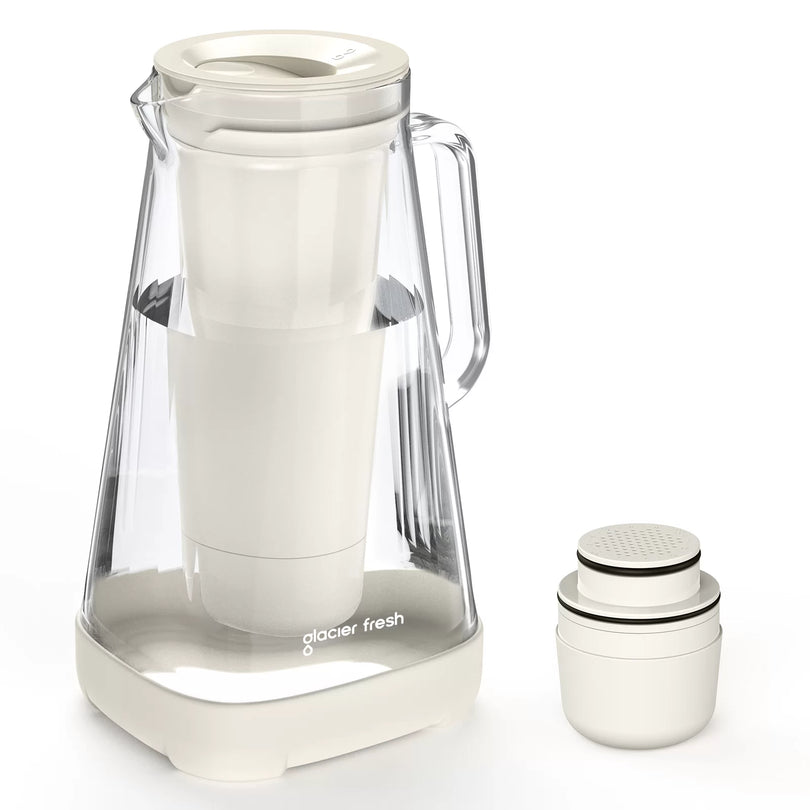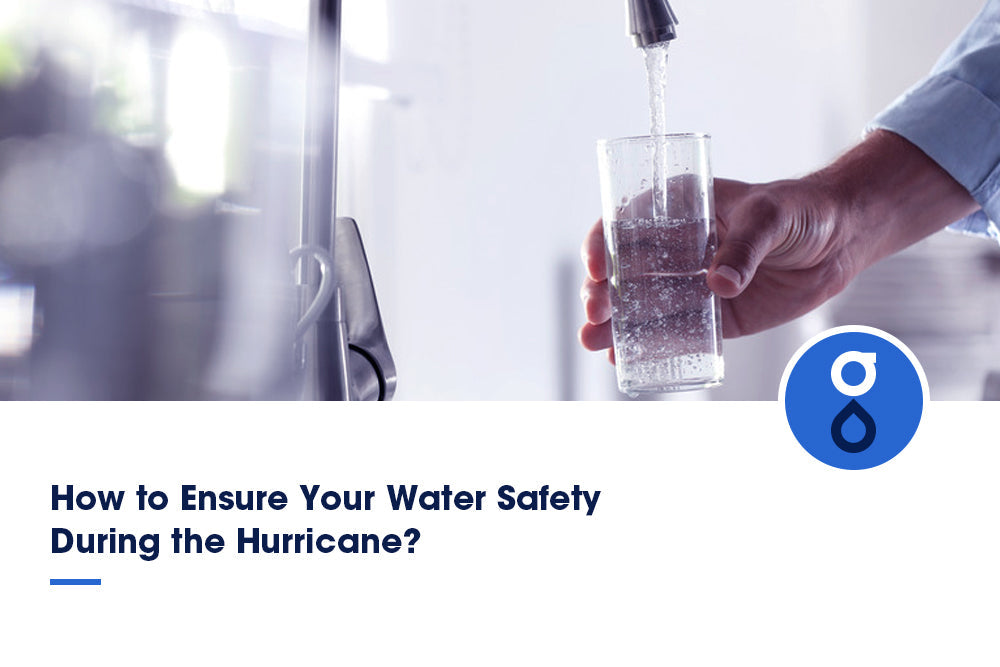Table of Contents:
Die Umweltauswirkungen von PFAS in Wassersystemen
Gesundheitsrisiken im Zusammenhang mit hohen PFAS-Werten
Faktoren, die die PFAS-Konzentrationsmessung in Wassersystemen beeinflussen
Methoden zur Prüfung der PFAS-Kontamination in Wassersystemen
Gesetzliche Standards für PFAS-Werte im Trinkwasser
Strategien zur Überwachung und zum Management von PFAS in Wassersystemen
FAQs
Abschluss
Sind Sie sich der potenziellen Gefahren in Ihren Wassersystemen bewusst? Es ist Zeit, die Bedeutung der Überwachung der PFAS-Werte zu verstehen. Diese schädlichen Chemikalien wirken sich negativ auf die Umwelt aus und stellen ein ernstes Gesundheitsrisiko dar. Dieser Artikel untersucht Methoden zur Prüfung auf PFAS- Verunreinigungen, gesetzliche Standards für sicheres Trinkwasser und Strategien zur Bewältigung dieses Problems. Nehmen Sie sich Zeit – erfahren Sie, warum die Überwachung der PFAS-Werte für die Gesundheit Ihrer Wassersysteme entscheidend ist.
Die Umweltauswirkungen von PFAS in Wassersystemen

PFAS gelangen durch industrielle Abwässer in die Umwelt und werden während der Nutzung und Entsorgung aus Produkten ausgewaschen, die sie enthalten. Diese Chemikalien zersetzen sich nur schwer und wurden weltweit in vielen Wassersystemen nachgewiesen:
- Kommunale Wasserversorgung – PFAS aus Industrieabwässern und Deponien können das Quellwasser kommunaler Wassersysteme verunreinigen. Die Behandlung kann sie nicht immer ausreichend entfernen.
- Private Brunnen – PFAS aus nahegelegenen Militärstandorten, Mülldeponien, landwirtschaftlichen Betrieben oder anderen Quellen können ins Grundwasser gelangen. Brunnen, die aus kontaminiertem Grundwasser schöpfen, weisen höhere PFAS-Werte auf.
- Seen, Flüsse und Bäche – Die direkte Einleitung von kommunalem und industriellem Abwasser, das PFAS enthält, kann Oberflächengewässer verschmutzen. PFAS können auch durch städtische Abflüsse in die Gewässer gelangen.
- Ozeane – PFAS wurden in Meerwasserproben weltweit nachgewiesen, was auf ihre Verbreitung über Flüsse und atmosphärische Niederschläge hindeutet.
- Regen und Schnee – In der Luft vorhandene PFAS werden durch Niederschläge ausgewaschen. Studien haben hohe PFAS-Werte im Regenwasser festgestellt.
Trinkwasser gilt als einer der Hauptwege der PFAS-Exposition für den Menschen . Eine Wasserverunreinigung ist, wenn sie erst einmal auftritt, schwierig und teuer zu beseitigen.
Gesundheitsrisiken im Zusammenhang mit hohen PFAS-Werten

Mit der Exposition gegenüber bestimmten PFAS-Verbindungen wurden möglicherweise eine Reihe von Gesundheitsproblemen in Verbindung gebracht:
- Erhöhte LDL- oder „schlechte“ Cholesterinwerte – können das Risiko einer Herzerkrankung erhöhen.
- Unterdrücktes Immunsystem – Eine verringerte Antikörperproduktion verringert die Wirksamkeit des Impfstoffs.
- Auswirkungen auf die Entwicklung – Verzögertes Wachstum und verzögerte motorische Fähigkeiten bei Kindern.
- Krebs – Erhöhte Inzidenz von Nieren-, Hoden- und Schilddrüsenkrebs.
- Leberschäden – Erhöhte Leberenzyme und Gewebeschäden beobachtet.
- Schilddrüsenerkrankung – Veränderungen des Hormonspiegels und der Drüsenfunktion.
Die genauen Gesundheitsrisiken hängen von den spezifischen PFAS, der Belastungshöhe und -dauer sowie individuellen Risikofaktoren wie Alter und Gesundheitszustand ab. Zwar bedarf es noch weiterer Forschung, dennoch ist die Einhaltung der Wasserqualitätsstandards ratsam.
Faktoren, die die PFAS-Konzentrationsmessung in Wassersystemen beeinflussen
Methoden der Probenentnahme
Um genaue Ergebnisse zu gewährleisten, ist es wichtig, geeignete Methoden zur Probenentnahme zur Überwachung der PFAS-Werte in Wassersystemen zu verwenden. Hier sind einige wichtige Faktoren, die bei der Probenentnahme zu berücksichtigen sind:
Probenahmetechniken:
- Auswahl geeigneter Probenahmestellen, um repräsentative Proben zu gewährleisten.
- Sammeln von Proben in unterschiedlichen Tiefen, um etwaige Schwankungen der PFAS-Konzentrationen zu erfassen.
Konservierungsmethoden:
- Verwendung geeigneter Behälter und Konservierungstechniken, um eine Verschlechterung der Proben zu verhindern.
- Hinzufügen von Konservierungsmitteln, beispielsweise Säure, um die Probenintegrität während des Transports und der Lagerung zu gewährleisten.
Ausrüstungsanforderungen:
- Verwendung sauberer und spezieller Geräte zur Vermeidung von Verunreinigungen.
- Sicherstellung der ordnungsgemäßen Kalibrierung und Wartung der zur Probenentnahme verwendeten Instrumente.
Lagerbedingungen
Für genaue Ergebnisse ist es entscheidend, die gesammelten Proben unter geeigneten Bedingungen zu lagern, um ihre Integrität zu erhalten. Die Temperaturkontrolle ist für die Erhaltung der Probenqualität unerlässlich. Es wird empfohlen, die Proben bei bestimmten Temperaturen zu lagern, um eine Zersetzung zu verhindern und ihre chemische Stabilität zu erhalten. Auch die Wahl des richtigen Behältertyps ist wichtig. Glasbehälter werden häufig verwendet, da sie nicht reaktiv sind und die Proben nicht verunreinigen. Kunststoffbehälter hingegen können Chemikalien in die Proben abgeben und so die Genauigkeit der Ergebnisse beeinträchtigen.
Darüber hinaus ist es wichtig, die Haltbarkeit Ihrer Proben im Auge zu behalten. Mit der Zeit können Proben verfallen, was zu ungenauen Ergebnissen führen kann. Durch die Einhaltung geeigneter Lagerbedingungen und regelmäßige Qualitätskontrollen können Sie die Genauigkeit und Zuverlässigkeit Ihrer Probenanalyse sicherstellen.
Bedingungen für die Probenlagerung
Durch die Einhaltung geeigneter Lagerbedingungen gewährleisten Sie die Integrität und Zuverlässigkeit Ihrer gesammelten Proben. Um Kontamination oder Qualitätsverlust zu vermeiden, ist ein sorgfältiger Umgang mit den Proben unerlässlich. Beachten Sie die folgenden Richtlinien zur Probenlagerung:
Probenhandhabung:
- Tragen Sie immer Handschuhe und verwenden Sie saubere Werkzeuge, um eine Kreuzkontamination zu vermeiden.
- Beschriften Sie jeden Probenbehälter genau, um Verwirrungen und Verwechslungen zu vermeiden.
Temperaturkontrolle:
- Lagern Sie die Proben bei der empfohlenen Temperatur, um eine Zersetzung zu verhindern.
- Verwenden Sie Kühl- oder Gefrierschränke für temperaturempfindliche Proben.
Qualitätskontrolle:
- Überwachen und protokollieren Sie regelmäßig die Lagerbedingungen, um die Stabilität der Probe sicherzustellen.
- Implementieren Sie strenge Qualitätskontrollmaßnahmen, um die Datengenauigkeit aufrechtzuerhalten.
Konservierungstechniken:
- Verwenden Sie geeignete Konservierungstechniken, wie z. B. die Zugabe von Konservierungsmitteln oder das Einfrieren von Proben.
- Befolgen Sie die etablierten Protokolle zur Probenkonservierung, um den Abbau zu minimieren.
Standardisierte Protokolle und Richtlinien
Befolgen Sie standardisierte Protokolle und Richtlinien, um Konsistenz und Genauigkeit bei der Lagerung und Handhabung Ihrer Proben zu gewährleisten. Diese standardisierten Richtlinien bilden den Rahmen für Überwachungstechniken, Datenanalyse, Qualitätskontrolle und Berichtsverfahren. Die Einhaltung dieser Richtlinien gewährleistet eine konsistente und zuverlässige Lagerung und Handhabung Ihrer Proben und minimiert das Risiko von Kontamination oder Qualitätsverlust. Dies führt letztendlich zu einer genaueren und zuverlässigeren Datenanalyse und ermöglicht Ihnen, fundierte Entscheidungen auf Basis der Ergebnisse zu treffen.
Methoden zur Prüfung der PFAS-Kontamination in Wassersystemen
Probenahmetechniken für PFAS-Tests in Wassersystemen
Um Ihr Wassersystem ordnungsgemäß auf PFAS-Verunreinigungen zu untersuchen, benötigen Sie spezielle, von Experten empfohlene Techniken. Die erste Technik ist die Stichprobenentnahme, bei der eine einzelne Wasserprobe an einem bestimmten Ort und zu einem bestimmten Zeitpunkt entnommen wird. Diese Methode ist schnell und einfach, liefert aber möglicherweise kein umfassendes Bild der PFAS-Werte in Ihrem System. Eine weitere Technik ist die Mischprobenahme, bei der Sie über einen bestimmten Zeitraum mehrere Proben entnehmen und mischen. Diese Methode liefert eine genauere Darstellung der PFAS-Werte im Zeitverlauf. Experten empfehlen außerdem die Verwendung von Flaschen aus Polyethylen niedriger Dichte (LDPE) zur Probenentnahme, da PFAS leicht an anderen Behältertypen haften kann.
Analytische Methoden zum Nachweis von PFAS-Verunreinigungen im Wasser

Eine häufig verwendete Methode ist die Flüssigchromatographie-Tandem-Massenspektrometrie (LC-MS/MS) . Bei dieser Technik werden die PFAS-Verbindungen aus der Wasserprobe abgetrennt und anschließend mittels Massenspektrometrie analysiert. LC-MS/MS ist hochempfindlich und kann geringe PFAS-Konzentrationen im Wasser nachweisen. Eine weitere Methode ist die Hochleistungsflüssigchromatographie (HPLC) in Kombination mit Fluoreszenzdetektion. Bei dieser Technik wird ein fluoreszierender Farbstoff verwendet, der spezifisch an PFAS-Verbindungen bindet und so deren Nachweis ermöglicht. Auch die Gaschromatographie-Massenspektrometrie (GC-MS) wird zur Analyse von PFAS in Wasser eingesetzt. Dabei werden die PFAS-Verbindungen verdampft und anschließend mittels Massenspektrometrie abgetrennt und identifiziert.
Qualitätskontrollmaßnahmen für genaue PFAS-Testergebnisse
Die Umsetzung von Qualitätskontrollmaßnahmen ist ein wichtiger Aspekt zur Gewährleistung genauer PFAS-Testergebnisse. Diese Maßnahmen sind entscheidend für die Aufrechterhaltung der Zuverlässigkeit und Glaubwürdigkeit des Testprozesses.
Eine Möglichkeit, dies zu erreichen, ist die regelmäßige Kalibrierung der Prüfgeräte, um genaue Messungen zu gewährleisten. Darüber hinaus ist es wichtig, Standardarbeitsanweisungen (SOPs) zu etablieren, die die während des Prüfprozesses zu befolgenden Schritte beschreiben. Diese SOPs sollten Details zur Probenentnahme, Handhabung und Analysemethoden enthalten. Darüber hinaus ist es wichtig, regelmäßige Qualitätssicherungs- und Qualitätskontrollprüfungen (QA/QC) durchzuführen, um die Genauigkeit und Präzision der Prüfergebnisse zu überprüfen. Dies kann die Durchführung von Doppelproben, die Analyse zertifizierter Referenzmaterialien und die Teilnahme an Eignungsprüfungsprogrammen umfassen.
Gesetzliche Standards für PFAS-Werte im Trinkwasser
Im Jahr 2016 legte die US-Umweltschutzbehörde EPA einen nicht durchsetzbaren Grenzwert von 70 Teilen pro Billion (ppt) für zwei gängige PFAS-Verbindungen fest – PFOA und PFOS. Einige Bundesstaaten haben seitdem strengere Richtlinien von 10 ppt bis zu einigen Dutzend ppt für bestimmte PFAS-Chemikalien festgelegt, insbesondere im Grundwasser.
Die EPA hat einen PFAS-Aktionsplan zur Festlegung nationaler Regulierungsstandards im Rahmen des Safe Drinking Water Act erstellt. Weitere toxikologische Studien sind im Gange, um angemessene PFAS-Grenzwerte zum Schutz der menschlichen Gesundheit zu ermitteln. Die aktuellen Richtlinien können bei neuen Erkenntnissen weiter verschärft werden.
Die Europäische Union und Kanada haben für ausgewählte PFAS wie PFOA, PFOS, PFNA und PFHxS Grenzwerte für Trinkwasser zwischen 5 und 30 ppt eingeführt. Die Durchsetzung geeigneter, wissenschaftlich fundierter Standards ist wichtig, um die PFAS-Belastung über das Wasser zu kontrollieren.
Strategien zur Überwachung und zum Management von PFAS in Wassersystemen

Wasserversorgungsunternehmen, -versorger und -aufbereitungsanlagen sollten proaktive Strategien zur Überwachung und Minimierung von PFAS in ihren Systemen anwenden:
- Installieren Sie körnige Aktivkohlefilter, Ionenaustauschsysteme und andere Technologien, um PFAS während der Behandlung zu entfernen.
- Führen Sie gemäß den Richtlinien der EPA-Methode 537.1 regelmäßige PFAS-Tests an kritischen Punkten wie Zulauf, Ablauf und aufbereitetem Wasser durch.
- Richten Sie ein PFAS-Überwachungsprogramm ein, um neue Kontaminationsquellen frühzeitig zu identifizieren. Führen Sie Analysen auf kurz- und langkettige PFAS durch.
- Prüfen Sie alternative Wasserquellen oder Mischungen, wenn die PFAS-Werte im aktuellen Quellwasser hoch sind.
- Einführung von Vorbehandlungsstandards für die Einleitung industrieller PFAS in die Kanalisation und Kläranlagen.
- Befolgen Sie bewährte Verfahren in Brandschutzübungsanlagen und kämpfen Sie gegen den PFAS-Abfluss in Oberflächen- oder Grundwasser.
- Informieren Sie die örtlichen Gemeinden anhand von Berichten zur Wasserqualität über die Gesundheitsrisiken und Vorsichtsmaßnahmen im Zusammenhang mit PFAS.
Eine ordnungsgemäße PFAS-Bewertung und -Kontrolle stellt sicher, dass öffentliche Wassersysteme sicheres Trinkwasser mit minimalen Expositionsrisiken liefern.
FAQs
Wie variieren die PFAS-Werte in Wassersystemen in verschiedenen Regionen?
Die PFAS-Konzentrationen in Wassersystemen variieren je nach Region aufgrund verschiedener Faktoren. Zu diesen Faktoren gehören industrielle Aktivitäten, die Nähe zu Kontaminationsquellen und Wasseraufbereitungsprozesse.
Können PFAS durch Aufbereitungsprozesse wirksam aus dem Wasser entfernt werden?
Verschiedene Entfernungstechniken, wie etwa Aktivkohlefiltration und Ionenaustausch, haben sich bei der Reduzierung des PFAS-Gehalts als wirksam erwiesen.
Abschluss
So, da haben Sie es! Die Überwachung der PFAS-Werte in Wassersystemen ist entscheidend für die Sicherheit der Umwelt und die öffentliche Gesundheit. Indem wir die Umweltauswirkungen und Gesundheitsrisiken hoher PFAS-Werte verstehen und wirksame Testmethoden und regulatorische Standards implementieren, können wir proaktiv Maßnahmen zur Kontrolle und Reduzierung der PFAS-Kontamination ergreifen. Wir müssen dieses Problem weiterhin beobachten und angehen, um unsere Wassersysteme und das Wohlergehen künftiger Generationen zu schützen.

